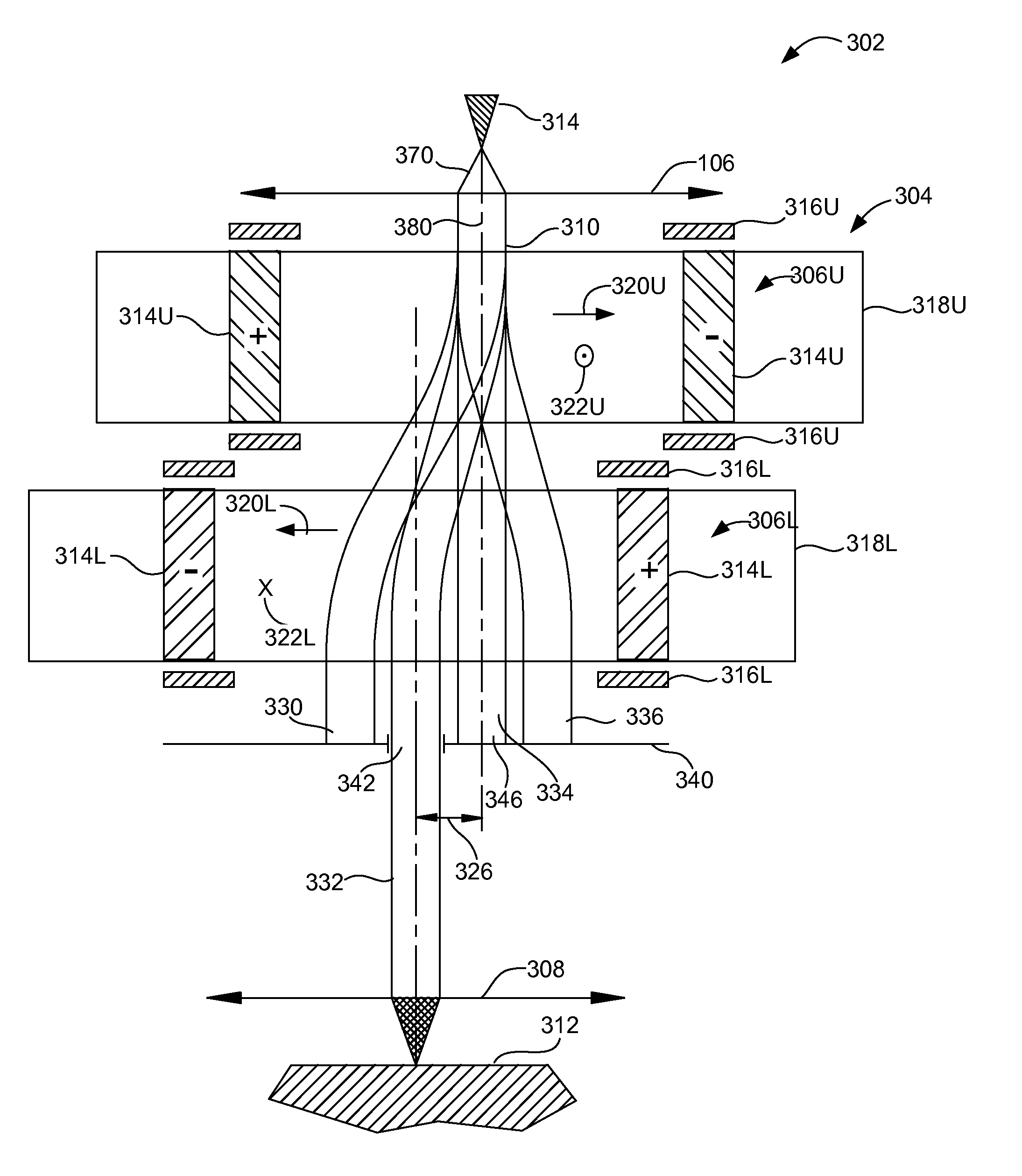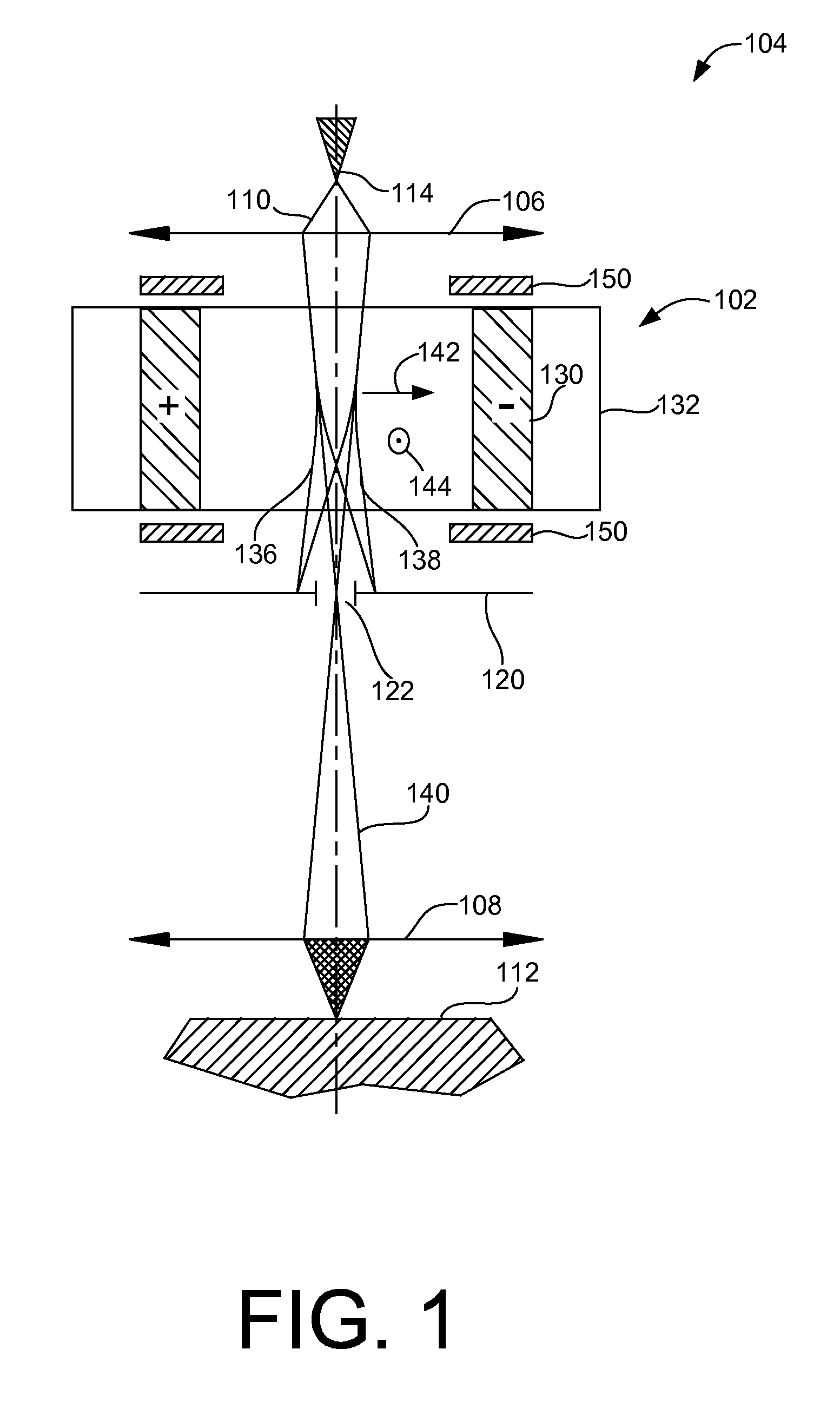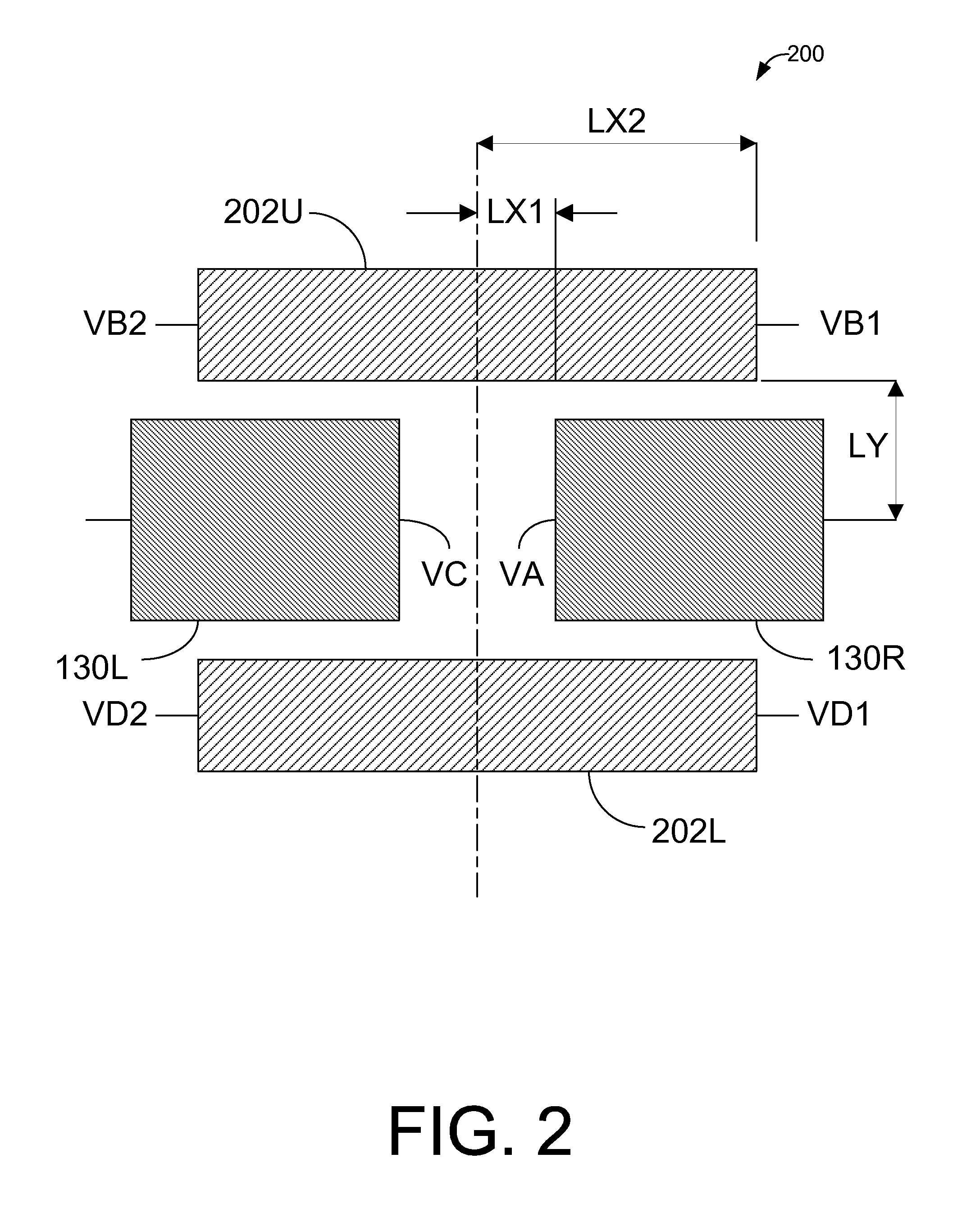Wide aperature wien exb mass filter
a mass filter and wide aperture technology, applied in the field of mass filter for an ion beam system, can solve the problems of blurring of the focused beam at the target, increased repulsion, and inability to achieve the effect of wide optical apertur
- Summary
- Abstract
- Description
- Claims
- Application Information
AI Technical Summary
Benefits of technology
Problems solved by technology
Method used
Image
Examples
example # 1
Example #1
Voltage Settings with No Deflection or Stigmation
[0035]In the case where only mass separation is desired, but no beam steering or stigmation, the voltages to the magnetic poles would be set as follows:
VB1=VD1=(LX2 / LX1)Vms
VB2=VD2=−(LX2 / LX1)Vms
[0036]Where the voltages on the electric poles would be:
VA=Vms
VC=−Vms
[0037]The value of Vms is chosen based on the electric field requirements for mass separation, in which the electric and magnetic forces on the ions are balanced for the ion species desired in the beam at the substrate, e.g., middle mass ions 140 in FIG. 1 being focused by lens 108 onto substrate 112.
[0038]The common-mode voltage of the overall Wien filter is set to 0 V in this example. If the voltage difference between the ion source and the Wien filter is Vaccel, then the energy of singly-ionized ions would be eVaccel passing through the Wien filter. For positive ions, this would correspond to the case of a positive Vaccel bias on the source relative to the bias...
example # 2
Example #2
Voltage Settings with Y-Axis Deflection but No Stigmation
[0040]In a second example where mass separation and Y-axis deflection are desired, the voltages to the magnetic poles would be set as follows:
VB1=(LX2 / LX1)Vms+VY
VB2=−(LX2 / LX1)Vms+VY
VD1=(LX2 / LX1)Vms−VY
VD2=−(LX2 / LX1)Vms−VY
[0041]Where the voltages on the electric poles would be:
VA=Vms
VC=−Vms
as was the case in example #1. The common-mode voltage of the Wien filter 200 is set to 0 V in this example. The Y-axis electrostatic deflection field is generated solely by the ±VY voltages applied to the two magnetic poles. By superposition, the effects of the (horizontal) electric field which is proportional to Vms, may be considered separately from the deflection effect of the (vertical) electric field which is proportional to VY. For the ion mass species which is selected to pass through the mass filter, e.g., middle mass ions 140 in FIG. 1, the net force on the middle mass ions 140 will be solely due to the Y-axis (vertic...
example # 3
Example #3
Voltage Settings with Stigmation but No Deflection
[0042]In a third example where mass separation and stigmation are desired, the voltages to the magnetic poles would be set as follows:
VB1=(LX2 / LX1)Vms−(LY / LX1)2Vstig
VB2=−(LX2 / LX1)Vms−(LY / LX1)2Vstig
VD1=(LX2 / LX1)Vms−(LY / LX1)2Vstig
VD2=−(LX2 / LX1)Vms−(LY / LX1)2Vstig
[0043]Where the voltages on the electric poles would be:
VA=Vms+Vstig
VC=−Vms+Vstig
[0044]As was the case in examples #1 and #2, Vms is the electric pole voltage needed for mass separation. The common-mode voltage of the overall Wien filter is set to 0 V in this example. The stigmation electrostatic quadrupole field is generated by the voltages applied to the electrostatic and magnetic poles which are proportional to Vstig—note that an (LY / LX1)2 scale factor for the voltages on the magnetic poles is used to compensate for different gap distances between the electric poles (2 LX gap) and the magnetic poles (2 LY gap)—the reason for the exponent of “2” in the stigmation ter...
PUM
 Login to View More
Login to View More Abstract
Description
Claims
Application Information
 Login to View More
Login to View More - R&D
- Intellectual Property
- Life Sciences
- Materials
- Tech Scout
- Unparalleled Data Quality
- Higher Quality Content
- 60% Fewer Hallucinations
Browse by: Latest US Patents, China's latest patents, Technical Efficacy Thesaurus, Application Domain, Technology Topic, Popular Technical Reports.
© 2025 PatSnap. All rights reserved.Legal|Privacy policy|Modern Slavery Act Transparency Statement|Sitemap|About US| Contact US: help@patsnap.com



